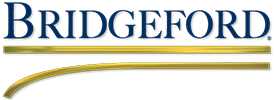 Commentators and advisors continue to debate whether offshore asset protection trusts, available in jurisdictions such as Nevis and the Cooks Island, are better asset protection vehicles than U.S. domestic asset protection trusts, available in a small number of states including South Dakota. The debate is typically fueled by esoteric legal distinctions and hyperbole or, more commonly, based upon a subjective planning bias of the particular advisor. Unfortunately, the debate does not always serve a client interested in obtaining asset protection well, as they are often left confused and uncertain as to what is the best option. However, a South Dakota statute appears to create the opportunity to bring both offshore and domestic asset protection strategies together in one trust instrument, thereby providing a solution that brings the “best of both worlds” to the asset protection planning space.
Commentators and advisors continue to debate whether offshore asset protection trusts, available in jurisdictions such as Nevis and the Cooks Island, are better asset protection vehicles than U.S. domestic asset protection trusts, available in a small number of states including South Dakota. The debate is typically fueled by esoteric legal distinctions and hyperbole or, more commonly, based upon a subjective planning bias of the particular advisor. Unfortunately, the debate does not always serve a client interested in obtaining asset protection well, as they are often left confused and uncertain as to what is the best option. However, a South Dakota statute appears to create the opportunity to bring both offshore and domestic asset protection strategies together in one trust instrument, thereby providing a solution that brings the “best of both worlds” to the asset protection planning space.
Similar to an offshore asset protection trust, a domestic asset protection trust shields assets in trust from third party liability (including spouses in a divorce proceeding), creditor claims, and judgements, while permitting settlors (individuals establishing the trust) the ability to retain some control over the trust assets, receive income, and enjoy a discretionary benefit during their lifetime. With its 2 year fraudulent conveyance statute (look back), South Dakota’s is among the shortest in the country (Delaware has a 4 year fraudulent conveyance statute).
South Dakota Statute 55-3-47 appears to provide a mechanism that provides both domestic and offshore asset protection within one trust instrument. If a judgment is obtained in any action brought against a trustee of a South Dakota trust for payment, where a foreign court declines to apply the law of South Dakota relative to the asset protection nature of the trust in determining the validity, construction, or administration of such trust, or the effect of a spendthrift provision, the statute clearly indicates that the trust company has no power or authority under South Dakota law to recognize or pay the judgment. Under the statute, the only power granted to the trust company is to resign and appoint a successor trust company in accordance with the terms of the trust instrument, and convey the trust property to the successor trustee. Presumably, the judgment obtained would then be returned unsatisfied and the creditor would need to commence the action against the successor trustee.
In this instance, it is important to note that there is nothing in the statute preventing a South Dakota trust company from transferring the trust and its assets to an offshore successor trust company, properly named in the document, thereby creating a very formidable asset protection strategy utilizing both domestic and offshore asset protection in one trust instrument. By operation of law and under appropriate trust provisions, the trust assets can be transferred offshore only when needed. Until the offshore asset protection is needed, the trust is administered in South Dakota and assets are held in the U.S. Therefore, the settlor truly enjoys the best of both worlds by avoiding the negative attributes associated with having a trust administered in an offshore jurisdiction (high costs, unstable governments, potential restrictive access to assets) while availing himself of the protection benefits of an offshore jurisdiction, should the need arise.
By combining the power of both offshore and domestic asset protection strategies in one trust instrument, South Dakota law appears to render the debate over offshore verses domestic asset protection moot and gives settlors an easy to understand and compelling option for obtaining asset protection. This asset protection planning technique available under South Dakota law is yet another example of the vital importance of selecting the proper trust jurisdiction in the trust planning process.
To learn more about South Dakota’s asset protection trusts, check out our asset protection trusts page on our website by clicking here. You can also watch a webinar that details the importance of choosing a trust jurisdiction with asset protection by clicking here.
Contact Bridgeford Trust via our contact page for additional information.
